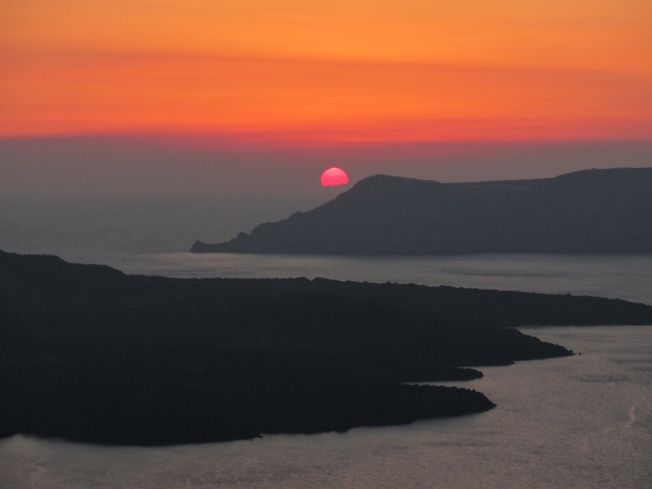Good winter, Sikya. It’s the standard leave-taking in Greece at summer’s end. As always, leaving is bittersweet; we’re anxious to see our family and friends in the States but sorry to leave our friends and family in Greece. The weather this September was spectacular. From the time we got back to Greece on 26 August until the morning we left (October 3), it was mild and sunny, warm enough for a swim, cool enough to lie on the beach without suffering. Meals on the balcony have been a delight, and there’s been a very pleasant northwest breeze almost everyday.
The Sikya fleet maintained at least a shadow presence until the last day — a first for us. And anglers were particularly active this September — both from the beach and in boats in the cove the activity seemed frenetic. Our peeks at the catch buckets revealed some very nice panfish, a sea-change from the little gavros we usually see reeled ashore. Adonis was his usual steady self, working out ceaselessly on the beach and in the sea but he, too, is different this year. With his hair cropped short, and his beard grown out, he’s scarcely recognizable. Susan said, “It’s like he’s had a head transplant. I had to look at his body to make sure it was him.” Perhaps he’d take some consolation in that. And the comedy show we refer to as The Mayor also saw a new act. When we returned from our trip to Thessaloniki in mid September, the mayor’s boat, know to us as The Scow, was beached in the crook of the cove. We thought perhaps the mayor had made a desperate miscalculation in attempting to save a few euros on winter docking fees. Surely the surf would pound that part of the cove all the way to the seawall during winter storms. But, indeed, The Scow was floating again a couple of days later, albeit a bit lower in the water. And finally, during the last weekend, we saw a fishing boat giving The Scow a brisk tow in the general direction of the Xylokastro marina. The mayor’s beach outpost, which grew to gypsy camp splendor this year, took on a decidedly neglected aspect, and the mayor could be spied sitting among the ruins staring disconsolately out to the spot in the cove where The Scow had formerly been moored.
The splendid, dreamy, ideal weather appeared to be coming to an end, however; the rains had begun. In the wee hours of 1 October we got a downpour which I estimated at an inch — the most rainfall we’ve witnessed in Greece. By dawn, however, the sky was cobalt once again and a line of clouds drifted below the top of Mt. Elikonas, across the Gulf. And the morning we left, in the dark of 4-blinking-30 AM, in a rented Suzuki SX4, I had my first opportunity in 6 months to drive in the rain on our way to the airport.
The last full moon of this year’s trip was while we were visiting Thessaloniki. It was wonderful seeing it rise over the city but we missed sitting on the beach in Sikya, peering to the east every few seconds, until suddenly, finally, it’s there: larger and closer than we’d expected.
It feels like it’s time to leave. Our apartment complex is virtually empty, and we’ve wished a good winter to many of our neighbors. The plateia, so busy on summer evenings, saw only a few kids each night the last 4 weeks, and recently dwindled to none. The silence, so fervently longed-for, now seems lonely. We laid in bed this morning, waiting for the 3:00 am alarm, listening to the surf bursting on the beach (a rare treat), thinking of the changing seasons, of time passing irredeemably. Time to get up and go. Good winter, Sikia.










